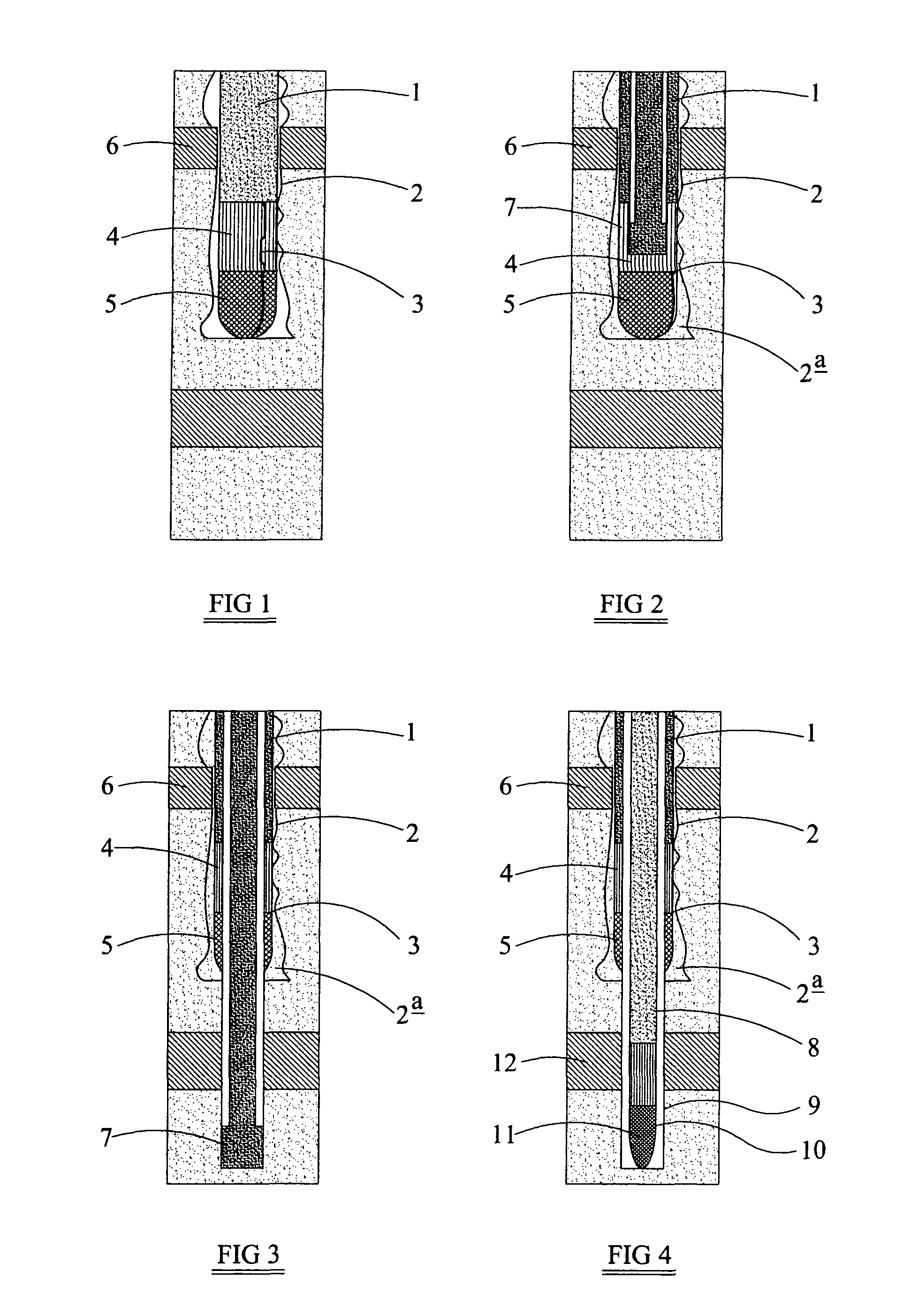Running bore-lining tubulars
a tubular and running bore technology, applied in the field of running borelining tubulars, can solve the problems of difficult running casing strings into wellbores, conventional casing and casing connectors are generally not well suited to withstand applied torque, and the form of tubulars is even less suited to transferring torqu
- Summary
- Abstract
- Description
- Claims
- Application Information
AI Technical Summary
Benefits of technology
Problems solved by technology
Method used
Image
Examples
Embodiment Construction
[0063]Reference is first made to FIGS. 1 to 4 of the drawings. FIG. 1 illustrates a 17½″ outer diameter casing or tubular 1 which has been run into a 23″ diameter drilled wellbore 2 using an apparatus 3 in accordance with an embodiment of the present invention. The apparatus 3 includes a drillable drive unit 4 and a drillable cutting structure 5. While running in the casing 1, drilling fluid is circulated through the casing 1. The drilling fluid passes through the drive unit 4 to rotationally drive the cutting structure 5. This allows the casing 1 to be run in, without rotation of the casing 1, through an unstable formation 6 which might otherwise prevent advancement of the casing 1, requiring the casing 1 to be run in to only partial depth, or requiring the casing 1 to be removed from the bore 2 and the unstable formation 6 re-drilled by conventional rock-drilling means.
[0064]The casing 1 is then cemented in the wellbore 2 with cement 2a, as illustrated in FIG. 2, and a 12¼″ diamet...
PUM
 Login to View More
Login to View More Abstract
Description
Claims
Application Information
 Login to View More
Login to View More - R&D
- Intellectual Property
- Life Sciences
- Materials
- Tech Scout
- Unparalleled Data Quality
- Higher Quality Content
- 60% Fewer Hallucinations
Browse by: Latest US Patents, China's latest patents, Technical Efficacy Thesaurus, Application Domain, Technology Topic, Popular Technical Reports.
© 2025 PatSnap. All rights reserved.Legal|Privacy policy|Modern Slavery Act Transparency Statement|Sitemap|About US| Contact US: help@patsnap.com



